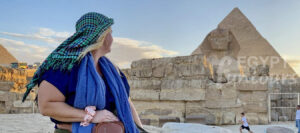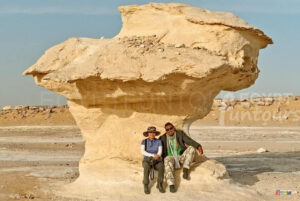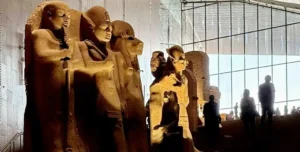Get off the river and step into the desert. On the high sands of the West Bank of the Nile (opposite Aswan), a massive, mud-brick fortress rises from the golden dunes. This is not a mirage. It is the Monastery of St. Simeon (Anba Samaan), one of the largest, best-preserved, and most impressive Coptic monasteries in all of Egypt.
This is more than just a ruin; it’s an adventure. A visit here is a journey by boat and by camel, back in time to the early days of Christian monasticism. It’s a “hidden gem” that most tourists miss, offering profound peace, stunning views, and an authentic taste of the ancient desert.



























